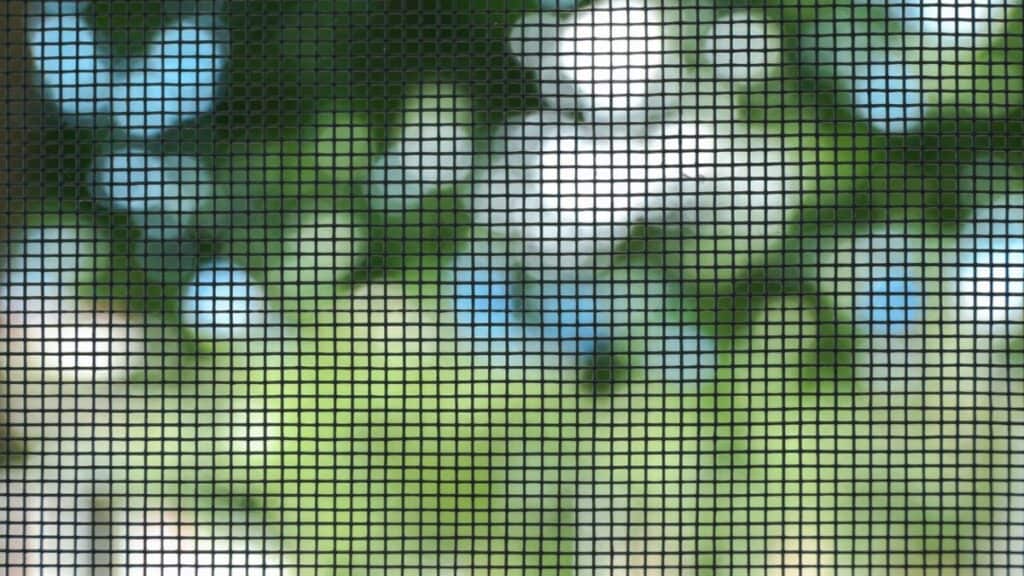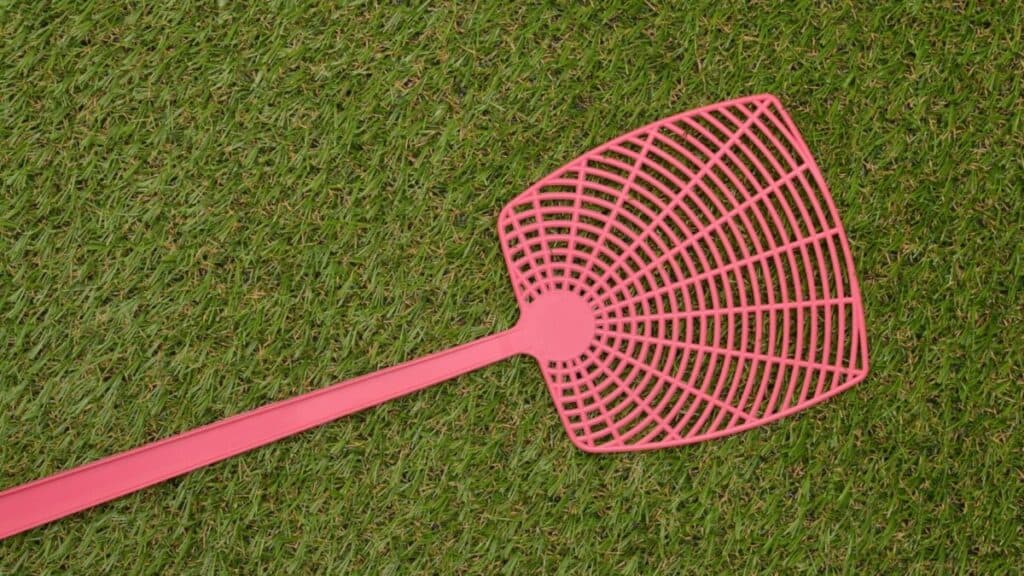
Conservatories are a popular addition to many modern homes and provide homeowners with the joy and relaxation of being outside while enjoying being free from bugs and bad weather.
Conservatories are also used for growing plants that would otherwise fall victim to various pests and the harsh elements of outdoors, making caring for them easier.
While having a conservatory is a great way to enjoy nature from the comfort of your own home, nature often has a way of bringing itself into your home whether you like it or not. This includes pests such as mosquitos, flies, worms, and other pests.
After all, one of the main reasons to have a conservatory is to enjoy being outdoors without being pestered by bugs – especially on hot summer days.
But how can you keep bugs out of your conservatory? The best tips are as follows:
- Use quality mesh window screens
- Have a fly swatter on hand
- Use insect sprays
- Diatomaceous earth
- Plant an herb garden on your windowsill
- Hang fly paper
- Avoid using artificial lights
- Install bug zappers
- Maintain windows, screens, and doors
The rest of this article will highlight the different ways to keep bugs out of your conservatory, as well as the preventative measures you can take to keep bugs out of your conservatory for good.
Why are there Bugs in my Conservatory?
Bugs are drawn to conservatories and sunrooms for the same reasons we are. Conservatories provide shelter from the elements – especially winds and rain – as well as protection from birds and predatory insects.

In the evening hours, conservatories tend to be warmer than outside gardens, providing bugs with more hospitable places to build nests and webs.
They are also drawn to the leftover bits of food and dead skin that people leave behind. In some cases, the conservatory also leads easier access inside the house, where bugs can find even better food, shelter, and places to hide.
Bugs will take advantage of entry points, such as torn screens, worn seals around doors and windows, and weakly guarded entry points.
For us, it can be easy to overlook seemingly minor maintenance issues. But for bugs, it provides them the quickest access inside.
Are Bugs in my Conservatory Dangerous?
While bugs are always a nuisance when they find their way inside your conservatory and inside your home, whether or not they are dangerous depends on the type of bugs that have gotten inside.
Depending on where you live, several dangerous species of insects and spiders can be found in and around your home.

The following insects are the most common dangerous insects in the United States, and are dangerous based on their toxicity, the power of their bites, health concerns such as whether they carry disease, and even the danger they can pose to your home’s foundation (such as termites).
These insects include but aren’t limited to:
- Black widow spiders
- Brown recluse spiders
- Centipedes
- Silverfish (common household pest that is difficult to get rid of)
- Termites (dangerous to your house’s foundation)
- Hornets
- Bees (especially if you or someone in your household is allergic)
- Scorpions (southwestern US)
- Red harvester ants
- Fire ants
- Yellow jackets
- Wasps
- Fleas
- Certain venomous caterpillars
- Ticks
- Chiggers
- Horseflies
- Mosquitos

Thoroughly bug-proofing your conservatory will ensure you keep these dangerous insects – plus other pesky bugs – out of your home.
How Do I Keep Bugs out of my Conservatory?
While there is no foolproof method to keep bugs out of your conservatory and you will have to regular check and maintain your conservatory to keep bugs at bay, the following are the most effective ways to keep pests away.
1. Install Quality Mesh Conservatory Screens
One of the best and simplest preventative measures in keeping bugs out of your conservatory is installing good quality mesh screens over your conservatory windows.

Fine mesh screens encourage natural air flow through your conservatory while also denying access to pests.
Good quality mesh screens are available, and the best part is that many of them you can install yourself.
2. Have a Fly Swatter on Hand
If the extent of the bug problem in your conservatory is seeing the occasional fly buzzing around, the simplest solution is to have a fly swatter on hand.
They are easy to store, inexpensive, and require minimal effort to kill bugs. You may not even have to get out of your chair.

Hang a fly swatter on a nail somewhere you can reach when you are relaxing in your conservatory. The easiest time to swat flies is during rainy or unseasonably chilly days, when the flies aren’t very active.
3. Use Insect Sprays
Insect sprays are a good solution if you live in a hot, humid area where bugs are a common nuisance. Unlike applying bug spray on your skin – although that would work if you’re dealing with biting bugs such as mosquitos and certain flies – the bug sprays mentioned here are those you can apply to window and door frames to repel insects.
While pest control chemicals like Raid can be sprayed around the perimeter of your doors and windows to repel bugs, harsh chemicals may not be the best option if you have children or pets. Also, if you grow indoor plants inside your conservatory, chemical insect sprays may poison your plants.
In most cases, chemical free repellents are the way to go. Most also smell wonderful, making relaxing in your conservatory even more pleasant.

The best natural and chemical-free insect repellents are:
- Peppermint oil – not only does it repel most insects, but mice as well
- Lemon eucalyptus oil
- Citronella candles – also known as lemon balm, main downside is that they only repel bugs while the candle is burning
- Cedar oil – you can also buy cedarwood chips and scatter them around your conservatory
- Lemon and vinegar
With most of these natural repellants, the oil can be added to water and applied with a spray bottle around doors and windows. They can also be added to diffusers.
4. Use Diatomaceous Earth
Diatomaceous earth is a natural element composed of fossilized algae. It traps and dries out crawling insects on contact but is safe for use around people.

While it won’t prevent flying insects from getting through your window, it is deadly to crawling bugs such as:
- centipedes
- caterpillars
- ants
- bedbugs
- cockroaches
- spiders
- silverfish
- termites
- bedbugs
5. Plant an Herb Garden on your Windowsill

Most herbs naturally repel bugs, and conservatories are ideal for growing live plants. The best herbs to grow in your conservatory include:
- Basil
- Garlic
- Lemon balm (the plant from which citronella is derived)
- Mint
- Peppermint
- Sage
- Rue
- Thyme
- Marigolds
- Bay leaves
- Ageratum / Flossflowers (mostly repels mosquitos)
- Catnip (just make sure to guard this plant if you have a pet cat!)
- Chives
- Lavender
- Pennyroyal (toxic to cats, don’t use if you have a pet cat)
- Tansy (toxic to most animals, keep out of reach of pets)
6. Hang Fly Paper
As its name suggests, fly paper is extremely effective against flies and other flying insects such as moths and mosquitos.
The downside is that it’s ugly, and shouldn’t be used unless you don’t mind seeing ribbons of wax paper hanging from your ceiling with dead flies stuck to them.
7. Avoid Using Artificial Lights
If you keep the lights on in your conservatory after sunset, you are basically asking to be swamped by bugs.
The solution is simple – turn off the lights in your conservatory after dark. If you find yourself needing light while relaxing on your conservatory after dark, consider using candles – bonus points if it’s a citronella candle.
8. Install Bug Zappers

This option is best if you don’t have pets or small children who can potentially get hurt by the zapper, though there are safer designs available that keep people safe while only allowing bugs entry to the electric current.
A bug zapper works by attracting flying insects via artificial light and then killing them with an electric zap.
It usually emits a soft electric buzzing sound that can be annoying to some. Most are designed to be hung from the ceiling or stoop, but some can be installed near power outlets and on walls.
9. Maintain Windows, Screens, and Doors
As the old saying goes, “an ounce of prevention is worth a pound of cure.” Inspect your conservatory regularly for any tears in your screens, worn-out seals around doors and windows, and any weak spots in your conservatory that could potentially allow bugs inside.
Even if you don’t yet see bugs inside, spray your windowsills and door frame with the natural insect repellants mentioned earlier in this article.
After all, it is far easier to prevent insects from entering in the first place than it is to try and get rid of them after they’ve appeared.
Conclusion
Don’t let the threat of bugs keep you from enjoying your conservatory. With proper preventative measures, you can keep pests away while fully enjoying all the peace and tranquility of nature that your conservatory offers.
Alright, that’s it for this article, here are a few hand-selected articles that you might also find interesting reads:
How to Keep Bugs Out of Your Shed – 10 Proven WaysHow to Keep Bugs out of Your Sandbox
How to Keep Bugs out of Your Raised Garden
Recent Posts
Tiny Black Bugs in Bathroom NO WINGS: What They Are and What to Do!
Finding tiny black bugs in your bathroom can be uncomfortable, to say the least. Especially if they are persistent, or they appear in very large numbers, which they often like to do. When it...
Tiny Black Bugs in Plant Soil - What Are They & What To Do About It
A short horror story: You get a new houseplant. You do your best to take care of it. You’ve ensured that it has the right soil, the right amount of sun, it gets enough water. And then one day, you...

